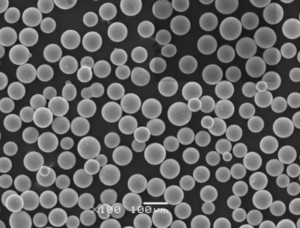Dünyasına hoş geldiniz EB 3D baskı sistemi! Bu alana dalıyorsanız, muhtemelen EB 3D baskıyı neyin tetiklediğini, diğer teknolojilere karşı nasıl yığıldığını ve projeleriniz için hangi belirli malzemelerin en uygun olduğunu anlamaya çalışıyorsunuzdur. Gelin bu büyüleyici teknolojiyi, temellerinden metal tozlarının incelikli ayrıntılarına kadar her şeyi ve neden aradığınız oyun değiştirici olabileceğini derinlemesine inceleyelim.
EB 3D Baskı Sistemine Genel Bakış
Elektron Işını Eritme (EBM) olarak da bilinen Elektron Işını (EB) 3D baskı, metal tozlarını katman katman eritmek ve kaynaştırmak için yüksek enerjili bir elektron ışını kullanan, yüksek hassasiyet ve mükemmel malzeme özelliklerine sahip karmaşık geometriler oluşturan gelişmiş bir eklemeli üretim sürecidir. Geleneksel yöntemlerin aksine EB 3D baskı, aksi takdirde üretilmesi imkansız veya son derece maliyetli olan karmaşık tasarımların oluşturulmasına olanak tanır.
Anahtar Detaylar:
- Teknoloji: Katmanlı Üretim
- Süreç: Elektron Işınıyla Eritme
- Malzemeler: Öncelikle Metal Tozları
- Uygulamalar: Havacılık ve Uzay, Tıbbi İmplantlar, Otomotiv, Kalıp ve daha fazlası
- Avantajlar: Yüksek hassasiyet, karmaşık geometriler, üstün malzeme özellikleri
- Sınırlamalar: Yüksek başlangıç maliyeti, sınırlı malzeme seçenekleri, vakum ortamı gerektirir
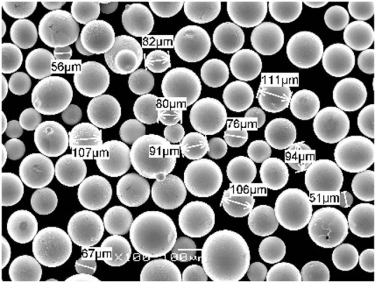
EB 3D Baskı için Metal Tozlarının Türleri ve Özellikleri
EB 3D baskının başarısı için doğru metal tozunun seçilmesi çok önemlidir. Aşağıda belirli metal tozu modellerinin, bileşimlerinin ve temel özelliklerinin ayrıntılı bir tablosu bulunmaktadır.
| Metal Tozu Modeli | Kompozisyon | Mülkler | Özellikler |
|---|---|---|---|
| Ti-6Al-4V | Ti-6Al-4V | Yüksek mukavemet, hafiflik | Havacılık ve tıbbi implantlarda yaygın olarak kullanılır |
| Inconel 718 | Ni-Cr-Fe | Yüksek sıcaklık direnci | Türbin kanatları ve yüksek gerilimli bileşenler için uygundur |
| CoCrMo | Co-Cr-Mo | Mükemmel aşınma direnci | Dental ve ortopedik implantlar için ideal |
| 316L Paslanmaz Çelik | Fe-Cr-Ni-Mo | Korozyona dayanıklı | Denizcilik ve tıbbi uygulamalarda kullanılır |
| AlSi10Mg | Yüksek Saflıkta Bakır Tozunun Özellikleri, Boyutları, Kaliteleri ve Standartları | Hafif, iyi termal özellikler | Otomotiv ve havacılık endüstrilerinde popüler |
| Maraging Çelik (1.2709) | Fe-Ni-Mo-Co | Yüksek mukavemet, iyi sertlik | Takım ve yüksek performanslı parçalar için kullanılır |
| Bakır (Cu) | Saf Bakır | Mükemmel termal ve elektriksel iletkenlik | Elektronik ve ısı eşanjörlerindeki uygulamalar |
| Niyobyum (Nb) | Saf Niyobyum | Yüksek erime noktası, iyi süneklik | Süper iletkenlerde ve havacılık bileşenlerinde kullanılır |
| Tantal (Ta) | Saf Tantal | Korozyona dayanıklı, yüksek erime noktası | Kimyasal işleme ekipmanları için uygundur |
| Hastelloy X | ASTM B193 | Oksidasyona dayanıklı, yüksek mukavemet | Gaz türbini motorları ve endüstriyel fırınlar için ideal |
Uygulamaları EB 3D Baskı Sistemi
EB 3D baskı’nın benzersiz yetenekleri, onu çeşitli yüksek performanslı uygulamalar için uygun hale getirir. Şimdi bu teknolojinin başlıca kullanım alanlarından bazılarına göz atalım.
| Uygulama | Endüstri | Kullanım Örneği |
|---|---|---|
| Havacılık ve Uzay Bileşenleri | Havacılık ve Uzay | Türbin kanatları, yapısal bileşenler |
| Tıbbi İmplantlar | Tıbbi | Kalça ve diz implantları, diş protezleri |
| Otomotiv Parçaları | Otomotiv | Motor bileşenleri, hafif yapılar |
| Takımlama ve Kalıplar | Üretim | Enjeksiyon kalıpları, kalıp döküm aletleri |
| Isı Eşanjörleri | Elektronik | Verimli soğutma çözümleri |
| Süper İletken Malzemeler | Enerji | Süper iletken mıknatıslar ve bileşenler |
| Kimyasal İşleme Ekipmanları | Endüstriyel | Korozyona dayanıklı bileşenler |
Özellikler, Boyutlar, Kaliteler, Standartlar
Metal tozlarının teknik özelliklerini, boyutlarını, kalitelerini ve standartlarını anlamak, EB 3D baskıda uyumluluk ve performans sağlamak için çok önemlidir.
| Metal Tozu | Partikül Boyut Aralığı | Sınıf | Standartlar |
|---|---|---|---|
| Ti-6Al-4V | 15-45 µm | 5. Sınıf | ASTM F2924 |
| Inconel 718 | 15-53 µm | AMS 5662 | ASTM B637 |
| CoCrMo | 10-45 µm | ASTM F75 | ASTM F1537 |
| 316L Paslanmaz Çelik | 15-45 µm | 316L | ASTM A276 |
| AlSi10Mg | 20-63 µm | DIN 3.2381 | ISO 3522 |
| Maraging Çelik (1.2709) | 15-45 µm | 1.2709 | AMS 6520 |
| Bakır (Cu) | 10-45 µm | Cu-ETP | ASTM B170 |
| Niyobyum (Nb) | 20-60 µm | R04200 | ASTM B392 |
| Tantal (Ta) | 15-45 µm | R05200 | ASTM B365 |
| Hastelloy X | 15-53 µm | UNS N06002 | ASTM B572 |
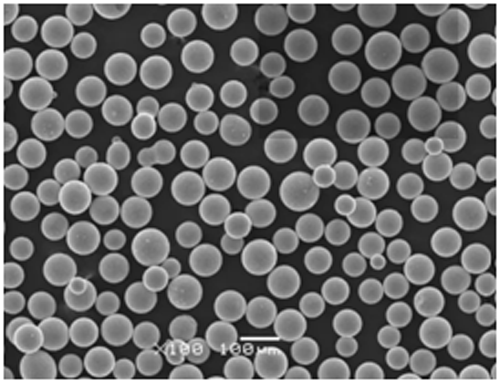
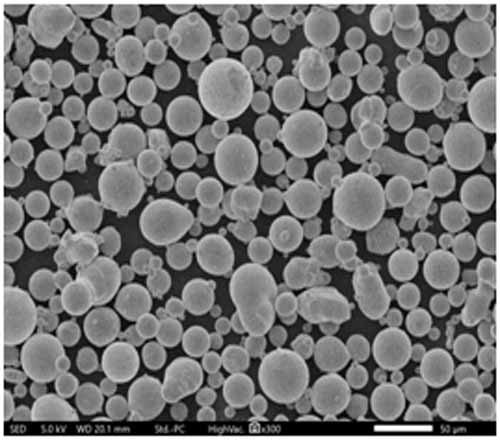
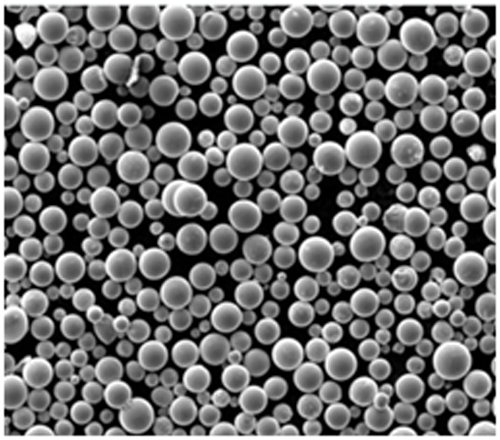
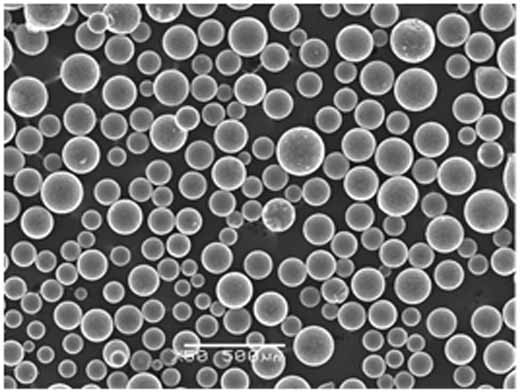
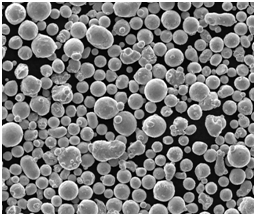
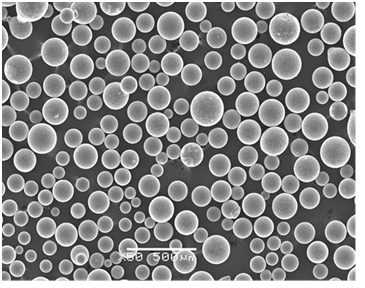
Tedarikçiler ve Fiyatlandırma Detayları
EB 3D baskı malzemelerinizin kalitesini ve tutarlılığını korumak için doğru tedarikçiyi bulmak çok önemlidir. İşte fiyatlandırma ayrıntılarıyla birlikte saygın tedarikçilerin bir listesi.
| Tedarikçi | Metal Tozu | Fiyat (kg başına) | Web sitesi |
|---|---|---|---|
| Gelişmiş Tozlar | Ti-6Al-4V, Inconel 718 | $300 – $500 | advancedpowders.com |
| Sandvik Malzemeleri | 316L Paslanmaz Çelik, AlSi10Mg | $200 – $400 | home.sandvik |
| Marangoz Teknolojisi | CoCrMo, Maraging Çelik | $350 – $600 | cartech.com |
| GKN Katkı Maddesi | Bakır, Niyobyum | $150 – $350 | gknadditive.com |
| LPW Teknoloji | Tantal, Hastelloy X | $400 – $700 | lpwtechnology.com |
EB 3D Baskının Artıları ve Eksilerinin Karşılaştırılması
EB 3D baskının avantajlarını ve sınırlamalarını diğer katmanlı üretim teknolojilerine karşı tartmak önemlidir. İşte ayrıntılı bir karşılaştırma.
| Aspect | EB 3D Baskı | Diğer Yöntemlerle Karşılaştırıldığında |
|---|---|---|
| Hassasiyet | Yüksek | SLM'ye benzer, FDM'den daha iyi |
| Malzeme Özellikleri | Üstün | Çoğu AM tekniğinden daha iyi |
| Hız | Orta düzeyde | SLS'den daha hızlı, DMLS'den daha yavaş |
| İlk Maliyet | Yüksek | SLM ve FDM'den daha yüksek |
| Operasyonel Maliyet | Orta düzeyde | SLM'ye benzer, DMLS'den daha düşük |
| Tasarımların Karmaşıklığı | Çok yüksek | FDM'den üstün, SLM ile karşılaştırılabilir |
| Malzeme Seçenekleri | Sınırlı | SLM ve DMLS'ye göre daha kısıtlı |
| İşlem Sonrası | Minimum | SLS'den daha az, DMLS'ye benzer |
| Vakum Gereksinimi | Evet | EB'ye özgüdür, SLM/FDM'de gerekli değildir |
EB 3D Baskı Sisteminin Bileşimi
EB 3D baskı sisteminin bileşimi, her biri süreçte hayati bir rol oynayan birkaç temel bileşen içerir.
- Elektron Işın Tabancası: Metal tozunu eritmek için elektron ışını üretir.
- Vakum Odası: Kirleticilerden arındırılmış kontrollü bir ortam sağlar.
- Toz Dağıtıcı: Metal tozunun eşit dağılımını sağlar.
- Platform Oluşturun: Yazdırılan parçayı destekler ve katmanlar eklendikçe hareket eder.
- Kontrol Sistemi: Işın kontrolünden toz serpmeye kadar tüm baskı sürecini yönetir.
EB 3D Baskı Sisteminin Özellikleri
EB 3D baskının benzersiz özelliklerini anlamak, tam potansiyelinden yararlanmak için çok önemlidir.
- Yüksek Enerji Yoğunluğu: Elektron ışını, yüksek erime noktalı metalleri hassas bir şekilde eritebilir.
- Vakum Ortamı: Oksidasyonu önlemek ve malzeme bütünlüğünü sağlamak için gereklidir.
- Katman Katman Füzyon: İnce detaylara sahip karmaşık geometrilerin oluşturulmasını sağlar.
- Minimum Termal Stres: Basılı parçalardaki eğrilmeleri ve artık gerilmeleri azaltır.
EB 3D Baskı Sisteminin Avantajları
EB 3D baskıyı neden düşünmelisiniz? İşte bazı ikna edici nedenler:
- Üstün Malzeme Özellikleri: Mükemmel mekanik özellikler ve malzeme homojenliği sağlar.
- Karmaşık Geometriler: Karmaşık tasarımlar ve iç yapılar üretebilir.
- Azaltılmış Atık: Atıkları en aza indirerek yalnızca gerekli miktarda malzeme kullanır.
- Daha Az İşlem Sonrası: Tipik olarak diğer yöntemlere kıyasla daha az bitirme işi gerektirir.
Sınırlamalar EB 3D Baskı Sistemi
Hiçbir teknolojinin dezavantajları yoktur. İşte dikkate alınması gereken bazı sınırlamalar:
- Yüksek Başlangıç Maliyeti: Ekipman ve kurulum maliyetleri küçük işletmeler için engelleyici olabilir.
- Malzeme Sınırlamaları: Diğer AM yöntemlerine kıyasla daha az malzeme seçeneği.
- Vakum Gereksinimi: Vakumlu bir ortam ihtiyacı kurulumu zorlaştırabilir.
- Hız: Özellikle büyük parçalar için diğer bazı 3D baskı yöntemlerinden daha yavaş.
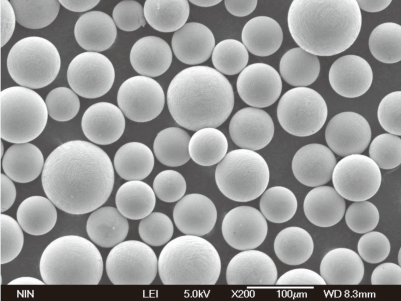
SSS
| Soru | Cevap |
|---|---|
| EB 3D baskı nedir? | Metal tozlarını katman katman eritmek için elektron ışınları kullanan yüksek enerjili bir eklemeli üretim süreci. |
| EB 3D baskı hangi sektörlerde kullanılıyor? | Ağırlıklı olarak havacılık, tıp, otomotiv ve imalat endüstrileri. |
| Hangi malzemeler kullanılabilir? | Öncelikle Ti-6Al-4V, Inconel 718 ve 316L Paslanmaz Çelik gibi metal tozları. |
| SLM ile karşılaştırıldığında nasıl? | Üstün malzeme özellikleri ve hassasiyet sunar ancak daha az malzeme seçeneğine sahiptir. |
| Başlıca avantajları nelerdir? | Yüksek hassasiyet, mükemmel malzeme özellikleri ve karmaşık geometriler oluşturma yeteneği. |
| Ana sınırlamalar nelerdir? | Yüksek başlangıç maliyeti, sınırlı malzeme seçenekleri ve vakum ortamı gereksinimi. |
| İşlem sonrası gerekli mi? | SLS ve DMLS gibi diğer yöntemlere kıyasla genellikle minimum düzeydedir. |
| Yaygın uygulamalar nelerdir? | Türbin kanatları, tıbbi implantlar, motor bileşenleri ve takımlar. |
| Elektron ışını nasıl üretilir? | Vakum odası içinde bir elektron ışını tabancası kullanarak. |
| Metal tozlarının tipik maliyeti nedir? | Fiyatlar, malzemeye bağlı olarak kg başına 150 ila 700 dolar arasında değişmektedir. |
Sonuç
EB 3D baskı sistemi, hassas ve mükemmel malzeme özelliklerine sahip yüksek kaliteli, karmaşık metal parçalar üretme kabiliyeti ile katmanlı üretim ortamında öne çıkmaktadır. Daha yüksek maliyetler ve bazı malzeme sınırlamaları ile birlikte gelse de, daha az atık, minimum işlem sonrası ve üstün mekanik özellikler açısından sunduğu avantajlar, performans ve kalitenin çok önemli olduğu endüstriler için cazip bir seçimdir. İster havacılık, ister medikal veya başka bir yüksek teknoloji alanında olun, EB 3D baskının nüanslarını anlamak, üretim süreçleriniz hakkında bilinçli kararlar vermenize yardımcı olabilir.
